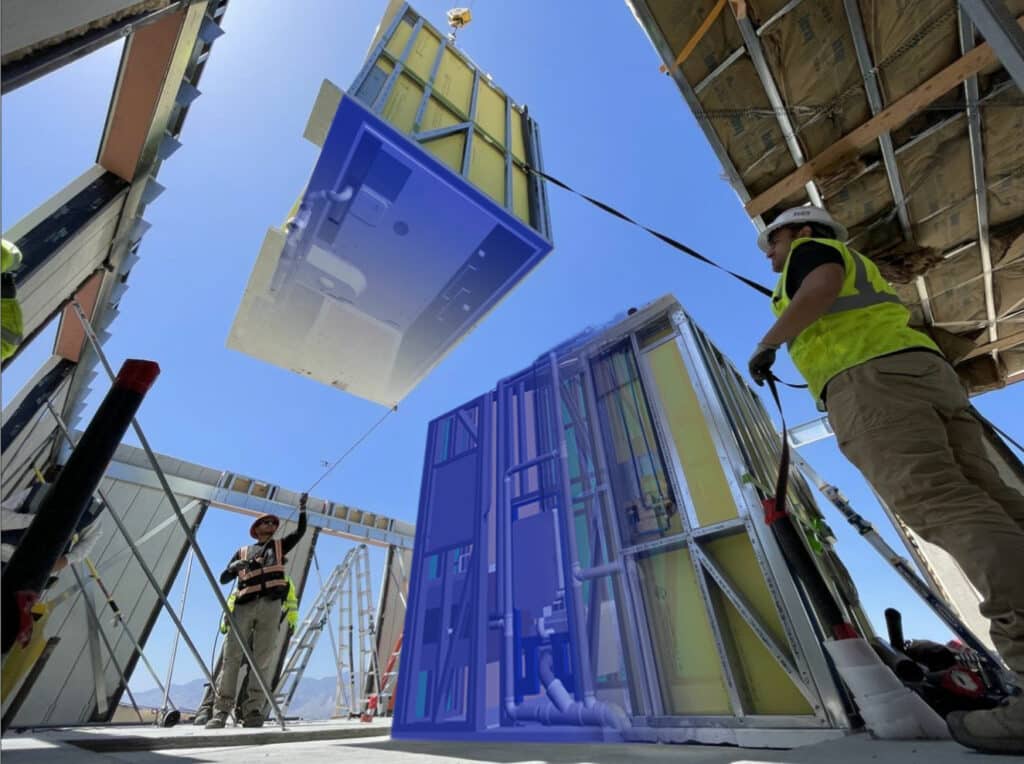In an industry grappling with persistent labor shortages, construction companies are turning to prefabrication as a viable solution to streamline processes and reduce costs. Prefabrication, which involves assembling components off-site before installation, offers numerous benefits, including significant labor cost savings, faster schedules and safer jobsites, weather independence, and quality control. As clients increasingly recognize the advantages of prefabrication, its widespread adoption is reshaping the construction landscape, compelling contractors to either embrace this innovative approach or risk being left behind. Moreover, it’s important to note that the adoption of higher-level Building Information Modeling (BIM) models, such as LOD 400 BIM, becomes essential with prefabrication, as LOD 300 or 350 may not suffice.

Prefabrication: A Game-Changer for Labor Costs
One of the most notable advantages of prefabrication is its potential for substantial labor cost savings. Many clients have reported saving between 40 to 60% on labor costs when opting for prefabricated components. By shifting labor-intensive tasks from the construction site to controlled factory environments, contractors can maximize efficiency and productivity, reduce on-site labor requirements, and minimize costly delays associated with weather, safety concerns, or other site-specific challenges. Consequently, prefabrication offers a compelling financial incentive for both clients and contractors.
The Competitive Edge of Prefabrication
Contractors that embrace prefabrication gain a significant competitive advantage. By prefabricating components off-site, contractors can reduce project timelines, improve quality control, and enhance overall project efficiency. This edge not only appeals to clients seeking faster project completion but also enables contractors to competitively bid for more projects and establish themselves as industry leaders. By optimizing processes and reducing costs, prefabrication allows contractors to outperform their peers who rely solely on traditional on-site construction methods.
Check out our Case Study of BIM Metal Framing Prefabrication and delve into these advantages!
Adopt or Die
The increasing prominence of prefabrication is transforming the construction industry, making it imperative for all contractors to either adopt this approach or face the consequences. As clients become more aware of the advantages offered by prefabrication, they will naturally gravitate towards contractors capable of delivering projects more efficiently and cost-effectively. Consequently, contractors resistant to the trend towards prefabrication risk losing business and may struggle to compete in an evolving market. Embracing prefabrication is no longer merely a competitive advantage but a necessity for survival.
The Evolution of BIM Models
The successful implementation of prefabrication often relies on the use of high-level Building Information Modeling (BIM) models. To ensure accurate and efficient off-site fabrication, contractors are increasingly required to create LOD 400 BIM Models, which provide detailed information about specific components, including dimensions, materials, and connections. As the industry continues to adopt prefabrication, LOD 350 BIM Models, which offer a lower level of detail, will become less relevant, especially during the preconstruction phase.
Conclusion
In the face of construction labor shortages, prefabrication has emerged as a transformative solution for contractors and clients alike. The significant labor cost savings, competitive advantages, and the necessity of adopting LOD 400 BIM Models associated with prefabrication make it an increasingly attractive option for the industry. Contractors that fail to embrace this innovative approach risk being left behind, unable to compete in a market where efficiency, cost-effectiveness, and timely project delivery are paramount. As the construction industry continues to evolve, prefabrication is not just a trend but a fundamental shift that will reshape the way projects are executed, ultimately transforming the industry for the better.
Make sure you seize the opportunity to incorporate the benefits of Prefabrication into your projects. Enhance your process with the expertise of ENG professionals and include LOD 400 in your workflow. Don’t miss out! Contact us today to request a quote.




